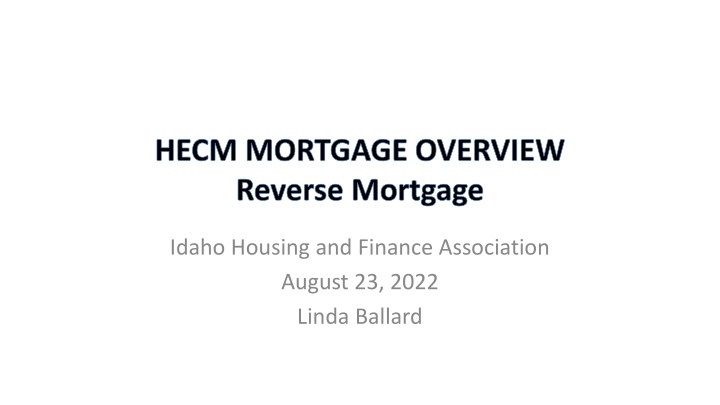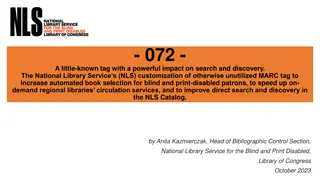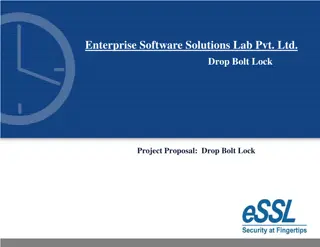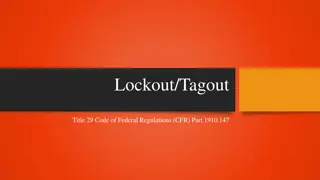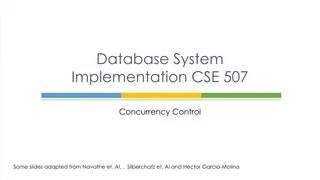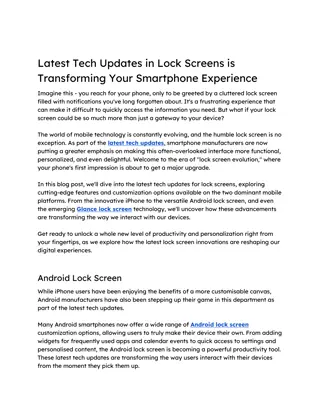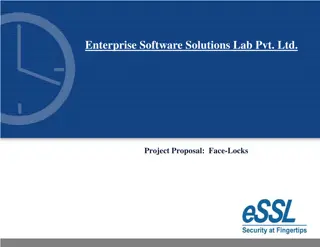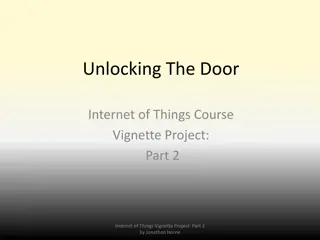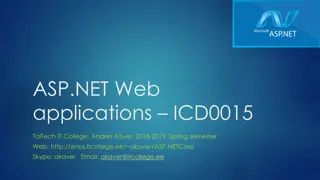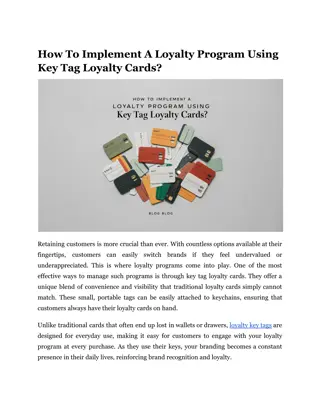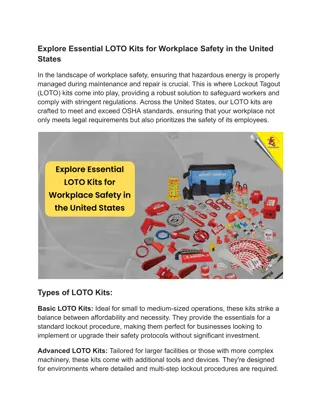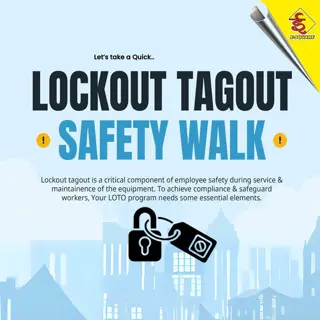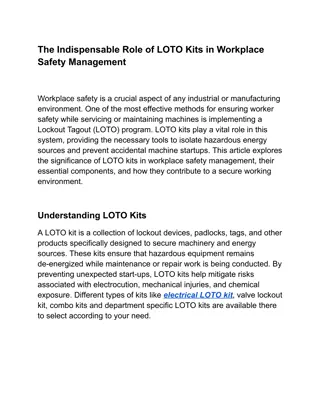Lock Out Tag Out (LOTO) Procedures
Supervisors play a crucial role in ensuring employees are trained and equipped to perform lockout/tagout procedures safely. This involves providing proper training, tools, and written procedures, as well as conducting regular compliance reviews. Authorized and affected employees must understand their roles in the LOTO process to prevent accidents. Regular training and clear communication are key to maintaining a safe work environment
Download Presentation

Please find below an Image/Link to download the presentation.
The content on the website is provided AS IS for your information and personal use only. It may not be sold, licensed, or shared on other websites without obtaining consent from the author.If you encounter any issues during the download, it is possible that the publisher has removed the file from their server.
You are allowed to download the files provided on this website for personal or commercial use, subject to the condition that they are used lawfully. All files are the property of their respective owners.
The content on the website is provided AS IS for your information and personal use only. It may not be sold, licensed, or shared on other websites without obtaining consent from the author.
E N D
Presentation Transcript
HECM MORTGAGE OVERVIEW Reverse Mortgage Idaho Housing and Finance Association August 23, 2022 Linda Ballard
What is a HECM? A Home Equity Conversion Mortgage (HECM) is a government insured loan secured by your primary residence The borrower owns the home Doesn t make a monthly mortgage payment A HECM is not assumable-No prepayment penalty 2
Requirements Live in the home Principal residence Occupy within 60 days of closing on a purchase No other liens at time of closing Maintain the property Pay taxes, all assessments and HOA fees Insurance and flood insurance if required
Eligible Properties 1 4 unit property Condos must be HUD approved Manufactured housing must meet HUD guidelines Home must be in good repair Construction is complete Certificate of Occupancy 4
Eligible Property Must meet FHA s minimum property standards Major deficiencies must be repaired prior to closing Leaking roof No running water Inadequate electrical Inoperable doors and windows Code violations Repairs must be paid by property owner 5
Ineligible Properties Boarding Houses Bed and Breakfasts Co-ops Manufactured homes built before 1976 Manufactured homes that do not conform to HUD standards (HUD plate) New construction without a CO 6
How is the Loan Amount Calculated? Maximum Claim Amount Maximum amount of value HUD allows lender to use to calculate loan amount Lower of sales price or appraised value OR $970,800. maximum Loan amount (called Principal Limit) Minus up-front costs Loan origination fee Up-front mortgage insurance premium Third party costs Closing costs Appraisal Credit report Etc. Equals amount available (called Net Principal Limit) 7
Funds to Close for Purchases Cash on hand Funds from the sale of current home Approved funding sources from HUD 4100.1 except: No Sweat equity No Trade equity No Rent credit Contributions from and interested party to the transaction including: Property seller Anyone who financially benefits from the transaction Builder incentives Discount points or interest rate buydowns Closing cost/down payment assistance Any third party or entity that is reimbursed (directly or indirectly) from any of the parties above Verification of source of funds is required-can not be borrowed funds Gap financing (bridge loans) or other interim financing are prohibited 8
How Does it Work Loan amount is based on: Age of the youngest borrower You must be at least 62 years old Value of the property Interest rate on the loan You cannot borrow the entire value of your home Closing costs can be paid from loan proceeds Two liens recorded on the property 1st lien to the lender 2nd lien to HUD 9
What Happens Equity decreases over time Client stays in the home even if all the equity is used Effect on heirs Heirs must pay off the loan up to 95% of new appraised value of the home
Fixed vs. Adjustable Interest Rate Fixed Rate Set at the beginning of the loan Never changes Lenders require lump sum distribution of available loan funds Loan balance increases faster on lump sum distribution loans Adjustable Rate Rate changes monthly or annually Borrower have more loan payment options Loan balance grows slower when a payment plan other than a lump sum distribution is chosen. 11
How Does it Work? You choose how to receive the funds Closed end: Usually a fixed rate loan Lump Sum All the available loan funds are received at closing Disbursement limited to 60% of Principal Limit OR Mandatory obligations + 10% of Principal Limit No additional funds are available after 12-month limitation expires 12
How Does it Work? Open end usually adjustable rate: Tenure Loan funds are received monthly for as long as you live in the home Paid on the first day of the month Term Loan funds are received monthly for a pre-determined period of time Paid on the first day of the month Line of Credit Funds are available on an as-needed basis Paid when requested. Lender must issue funds within 5 days of request. First 12 month limits apply Maximum of 60% of Principal Limit OR Sum of Mandatory Obligations + 10% of PL Remaining funds are available after 12 month limit expires 13
Credit Line Growth If you choose a line-of-credit Credit line grows at the same rate as: Current interest rate plus annual MIP Divided by 12 and added to the available principal limit each month Increase in borrowing capacity, not interest income Credit remaining at end of loan are un-borrowed funds Think like a credit card Heirs cannot use un-borrowed funds to repay the HECM Credit Line Interest & MIP 14
Monthly Charges Mortgage Insurance Premium Annual premium of .50% of outstanding balance 12 Possible set-asides Servicing fee Repairs Taxes & Insurance Set-aside for taxes and insurance could be required
Mandatory Obligations for Purchase Transactions Funds to: Pay property seller the balance owed in excess of down payment Pay delinquent federal debt Initial MIP Loan origination fee HECM counseling fee Customary closing costs Property tax, flood and hazard insurance required to be paid at closing and/or within the 1st 12-months of the loan 16
Homeowners Responsibilities? Pay real estate taxes and other assessments Pay homeowners insurance Pay Flood Insurance if required Pay Home Owners Association or Condo fees Keep the home in good repair Live in the home for at least 6 months and 3 days each year 17
When Does the Loan Get Repaid? Can pre-pay all or some of the loan anytime Pre-payments apply first to fees and interest then to principal reduction Increases ability to re-borrow funds on open-end loans Cannot re-borrow funds if lump-sum of all funds are drawn at initial closing. Loan becomes due and payable when you Move Sell Pass Away Does the reverse mortgage ever have to be repaid? When?
Financial Assessment Required Includes Credit history-credit report required Income sources will need documented Cash flow analysis Includes Income tax; FICA; property charges; utility and maintenance costs; debts; mortgage related costs Evaluation of extenuating circumstances and compensating factors can be considered 19
IDAHO HOUSING AND FINANCE ASSOCIATION Eunice L. Linda Ballard 208-331-4892 Certified HECM Counselor HUD Certified Housing Counselor
